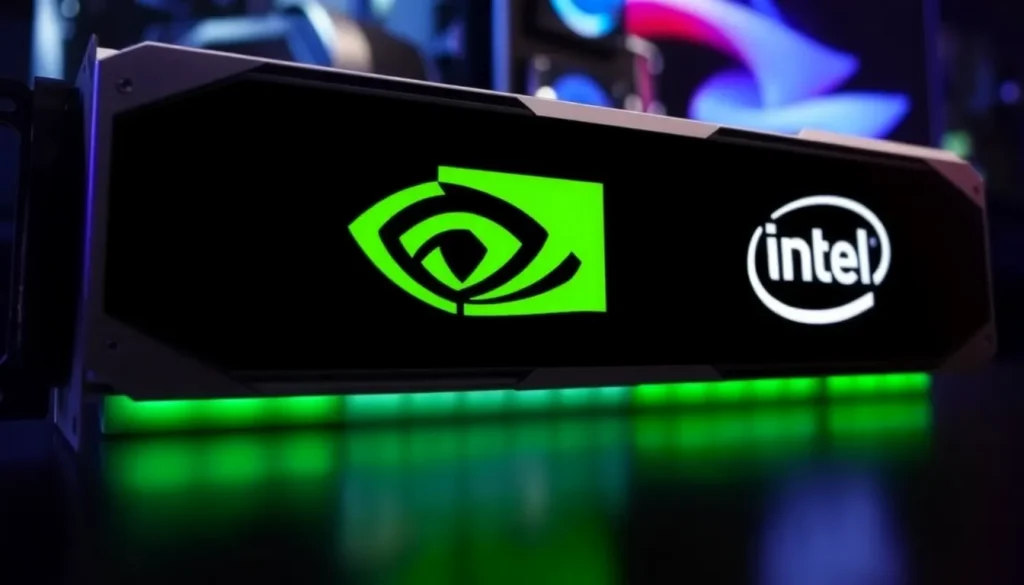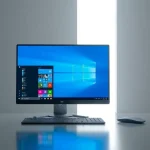Nvidia and Intel partnership reshapes PC graphics forever

In a surprising turn of events, two giants of the tech world, Nvidia and Intel, are joining forces in a partnership that could redefine the landscape of personal computing. With Nvidia's recent acquisition of a $5 billion stake in Intel, the tech community is abuzz with speculation about the implications of this alliance. The collaboration aims to merge Intel's x86 CPU cores with Nvidia's cutting-edge RTX GPU cores, a move that could signify a pivotal shift in how we think about PC graphics.
This partnership not only raises eyebrows due to its unexpected nature but also ignites conversations about competition in the tech industry. Will this alliance lead to a new era of efficiency and performance, or will it stifle innovation by creating a duopoly? Let's dive deeper into what this collaboration means for the future of PC hardware and gaming.
A chip alliance that could change everything
The integration of Intel's x86 architecture with Nvidia's RTX graphics technology represents a monumental shift in the chip industry. Currently, Nvidia dominates the PC graphics market, but it has not yet ventured into fully integrated graphics solutions. This gap has allowed competitors like AMD to thrive in specific areas, particularly in portable gaming devices and laptops.
By combining their strengths, Nvidia and Intel aim to create a powerful system-on-chip (SoC) that offers:
- Enhanced Performance: By merging CPU and GPU capabilities, the new SoCs are expected to deliver superior performance for gaming and professional applications.
- Improved Efficiency: A tightly integrated design minimizes power consumption and optimizes performance, setting a new standard for energy efficiency.
- Competitive Edge: This partnership will enable Intel to present a compelling case to laptop manufacturers, making it more attractive to build devices around their integrated solution rather than opting for AMD alternatives.
As a result, the alliance not only strengthens Intel's position in the market but also opens doors for Nvidia to penetrate segments where it previously faced challenges. The potential for integrated graphics in portable devices is now a viable reality, providing a significant advantage over competitors.
Is this the beginning of a new duopoly?
The formation of this partnership raises important questions regarding market competition. With Nvidia's substantial market share in graphics—currently holding about 74.88%—and Intel's dominance in CPUs, the combination of these two giants could lead to a scenario where alternatives are severely limited.
Market analysis shows that:
- Nvidia's graphics solutions are often preferred by gamers and professionals, leaving AMD trailing significantly in the desktop GPU race.
- Intel holds a commanding lead in the CPU market, with a 60-40 split favoring them over AMD.
- AMD's discrete graphics offerings lag behind Nvidia, with their most popular model, the RX 6600, ranking lower than older Nvidia GPUs in usage.
Furthermore, this alliance might compel regulatory bodies to scrutinize their market behavior closely. If successful, it could create a monopolistic environment, stifling innovation and limiting choices for consumers. The implications of this for the tech landscape could be profound, as a lack of competition often leads to stagnation in technological advancements.
What does this mean for desktop graphics?
The implications of the Nvidia-Intel partnership could signal the end of traditional discrete graphics cards as we know them. The current structure of discrete graphics often leads to inefficiencies due to duplicate components like memory and silicon. This setup also complicates workload management, resulting in performance bottlenecks.
By contrast, an integrated approach allows for:
- Shared Memory: A unified memory pool across CPU and GPU reduces redundancy and latency.
- Improved Workload Distribution: Tasks can be passed seamlessly between CPU and GPU, enhancing overall system performance.
- Compact Designs: Integrated solutions can create smaller, more efficient devices, catering to the growing demand for portable computing.
While the initial focus may be on laptops, the advantages of this integration will inevitably extend to desktop systems, potentially changing the landscape for gaming and professional computing. The move toward integrated chips could mean a future where users bid farewell to the option of upgrading discrete graphics cards, ushering in a new era of computing.
Potential benefits of the alliance
Despite concerns regarding competition, there are positive aspects to consider arising from the Intel-Nvidia partnership. The potential for this alliance to drive innovation is significant, offering several advantages:
- Performance Gains: The collaboration promises to yield chips that excel in both speed and efficiency, enhancing user experiences.
- Cost Efficiency: By eliminating the need for separate memory systems, we could see reduced pricing for consumers, making high-performance computing more accessible.
- Accelerated Development: The urgency for both companies to capitalize on this partnership could lead to rapid advancements and product launches.
Moreover, should delays occur in bringing products to market, it may present an opportunity for AMD to accelerate its innovations in response, fostering a more competitive environment in the long run.
As the tech world watches closely, Nvidia's CEO Jensen Huang has expressed confidence in the partnership, suggesting that Nvidia will be a significant supplier of GPU chiplets to Intel. This commitment illustrates the potential for transformative changes in the PC landscape.
For a deeper look into the implications of this partnership, check out this insightful video that discusses the future of PC gaming in light of the Nvidia-Intel alliance:
The announcement of the Intel-Nvidia partnership undeniably marks a significant moment in technological history. As we anticipate the release of their integrated SoCs, the PC market is poised for change, bringing both challenges and opportunities for consumers and competitors alike.




Leave a Reply